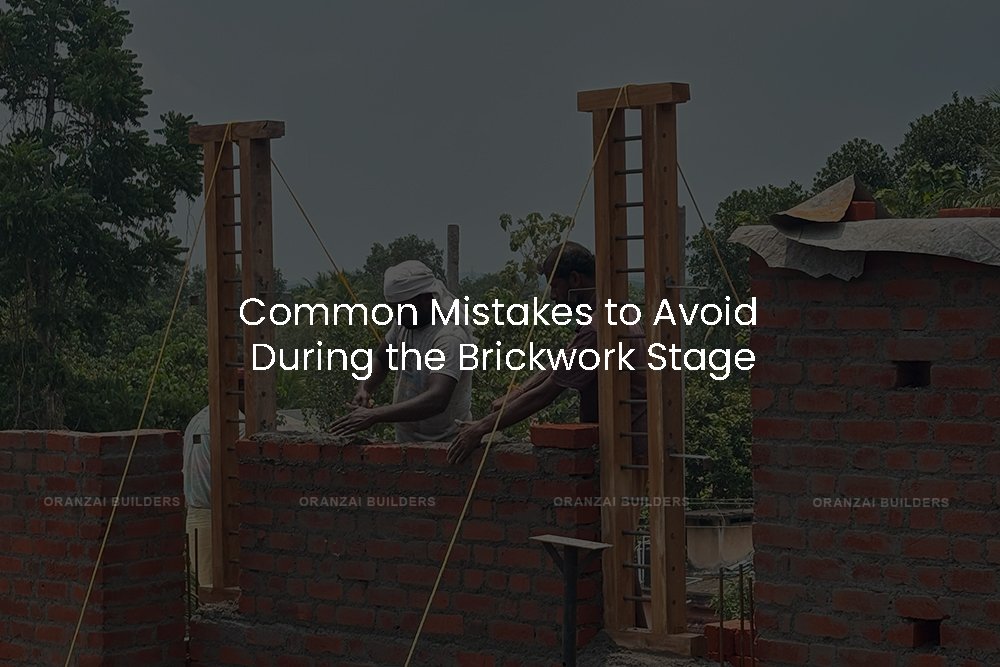
Brickwork is one of the most crucial stages in home construction — it determines your building’s strength, durability, and finish quality. Even minor mistakes at this stage can lead to cracks, dampness, or structural issues in the long run. Whether you’re constructing your first home or managing a project, understanding what can go wrong helps ensure a flawless finish.
Here are some of the most common brickwork mistakes and how to avoid them for a sturdy, lasting structure.
1. Using Poor-Quality Bricks
The strength of any wall begins with the quality of its bricks. Using low-grade or uneven bricks can cause weak bonding, cracks, and moisture penetration. Always choose first-class, well-burnt clay bricks that are uniform in size and free from cracks or visible defects.
👉 Pro Tip: Test a few bricks by striking them together — a clear ringing sound indicates good quality.
2. Incorrect Mortar Mix
Mortar acts as the binding agent between bricks. If the cement-sand ratio is not properly maintained, it can weaken the structure. A common mistake is making the mortar too thick or too watery.
For most residential projects, a 1:6 cement-to-sand ratio is ideal. Mix only what can be used within 30 minutes to prevent drying before application.
3. Skipping Proper Brick Soaking
Dry bricks absorb water from the mortar, leading to weak bonding and cracks. Always soak bricks in clean water for at least 30 minutes before laying to achieve a strong bond and uniform setting.
4. Ignoring Line and Level
Uneven courses or walls out of plumb are among the most common brickwork defects. Failing to use a plumb line, level, or string line can lead to crooked walls that affect both stability and appearance.
Check alignment and level after every few layers to maintain accuracy throughout the process.
5. Not Maintaining Proper Joints
Uneven or overly thick mortar joints reduce all strength and aesthetics. Ideally, maintain 10–12 mm horizontal joints and 8–10 mm vertical joints for a uniform look and strong bond.
6. Laying Bricks Too Quickly
Speed often comes at the cost of quality. Laying bricks too fast without allowing the mortar to set properly can lead to shifting, misalignment, and weak joints. Brickwork should progress gradually, allowing adequate setting time between layers.
7. Poor Curing Practices
Curing is essential for strength development. Neglecting curing can result in cracks, poor bonding, and moisture ingress. Ensure brickwork is cured for at least 7 days using gentle sprinkling of water, especially during hot weather.
8. Ignoring Expansion and Control Joints
Walls expand and contract with temperature and moisture changes. Without expansion joints, cracks may appear over time. Proper joint spacing and detailing are crucial, particularly in long walls.
9. Using Unscreened or Impure Sand
Sand with impurities like silt or clay affects mortar strength. Always use clean, well-graded river sand that passes through proper sieving to maintain consistency and bonding strength.
10. Lack of Supervision and Quality Checks
Even skilled masons can make mistakes if supervision is poor. Regular site inspections and guidance from a qualified engineer or construction supervisor ensure that quality standards are maintained at every stage.
The brickwork stage lays the foundation for your home’s strength and longevity. Avoiding these common mistakes not only enhances quality but also prevents costly repairs in the future. A professional construction team ensures every detail — from material selection to curing — is handled with precision.
Build It Right with Oranzai Builders
At Oranzai Builders, we believe that every brick matters. Our experienced engineers and craftsmen follow strict quality control at every stage of construction to ensure structural strength, durability, and flawless finish.
🏗️ Build your dream home with Oranzai Builders — where precision meets perfection.
📞 Contact us today to begin your construction journey in Kerala.